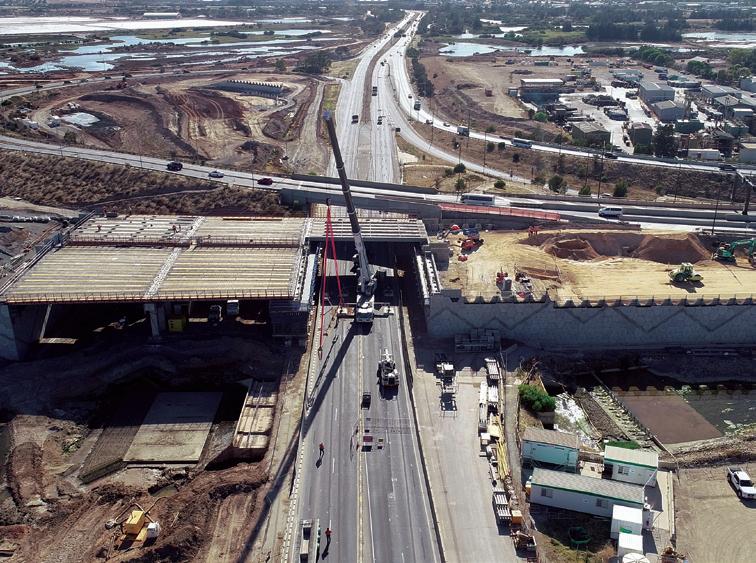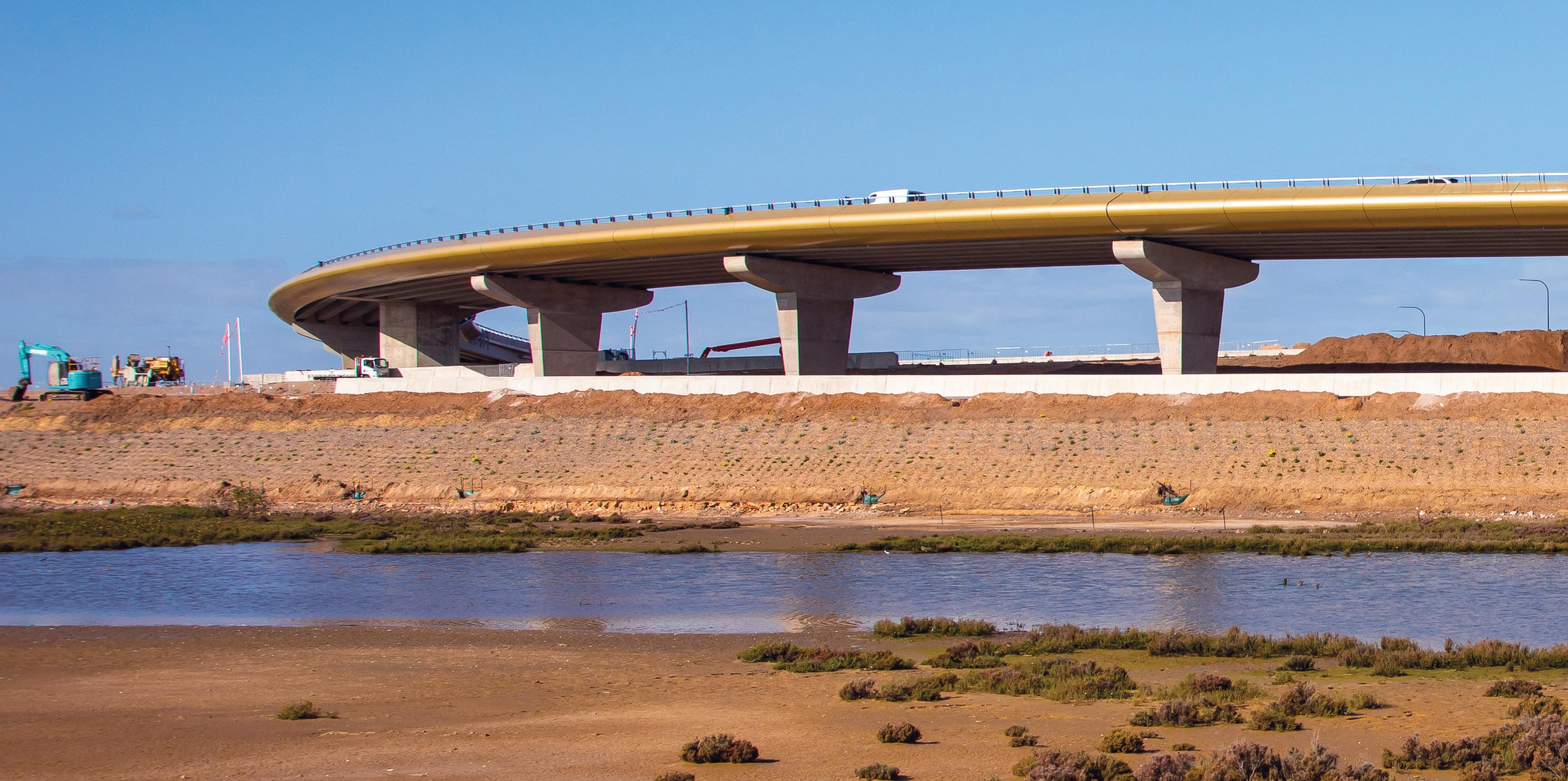
7 minute read
Feature: Adelaide's North gets an EPIC new welcome mat.
Adelaide’s north gets an epic new welcome mat
South Australia’s first concrete major road, the 6-lane 110km/h Northern Connector, officially opened in March 2020. It is 15.5 kilometres long, has 4 major interchanges, a complex and modern intelligent transport system, wetlands, landscaping and architecture – everything you’d expect in a modern motorway project.
The $867 million spend might be slightly higher than what you’d pay for bitumen, but the benefit is in the lifetime cost of maintenance that will be around 40 per cent cheaper. The motorway will serve as a new national road link between the CBD, the Port of Adelaide and beyond to the Mid North, Barossa Valley and the Riverland. It connects the Northern Expressway, Port Wakefield Road, South Road Superway, Port River Expressway and the Salisbury Highway. Motorists will have an unimpeded run from Gawler to Regency Park (a total of 43 kilometres, via the Northern Expressway and South Road Superway), or from Gawler to Port Adelaide (a total of 40 kilometres, via the Northern Expressway and Port River Expressway). About 55,000 motorists a day are expected to use the new amenity, cutting about 10 minutes off their travel times. The project includes a new 16-kilometre shared-use pedestrian and bike path that runs along the full length of the Northern Connector. Early site works began in the last quarter of 2016 with Lendlease the head contractor. The project exceeded its target of 480 jobs each year of construction, including more than 620 individuals contributing to onsite labour hours during February 2019. Lendlease used some of its own fleet but mostly relied on equipment hire through local businesses. It helped transfer skills in the technology of concrete roads construction to SA workers.
FAST FACTS: 930,000 native shrubs and trees are being planted across the project; 175,000 cubic metres of concrete was used for the pavement; cement and granulated blast furnace slag was sourced from Adelaide Brighton; reinforcing steel and billet from Liberty Steel; and quarry products from Southern Quarries and Clinton Sands; 6,750 tonnes of Whyalla steel was used.
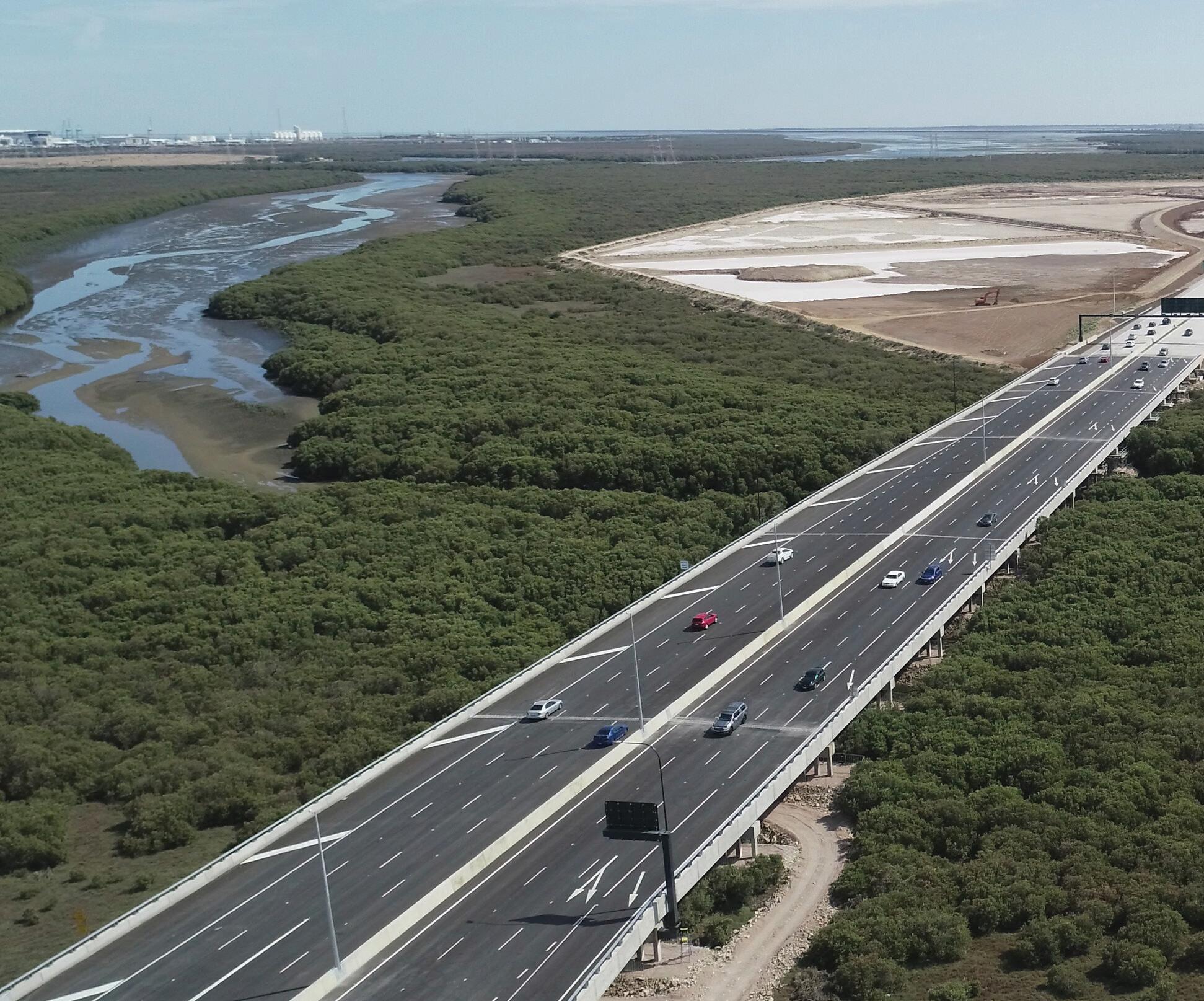
WHY IT WAS ‘SPECIAL’
It’s the biggest road project Lendlease has constructed in SA. “We did the Adelaide desalination plant in joint venture a few years ago that was a higher cost project but I guess it depends on how you measure ‘big’,” said Danny Parkinson, Lendlease Operations Manager in SA. “For me, the Northern Connector is a special project for a number of reasons. Firstly, it’s the first time anyone has done a concrete road pavement in the state of South Australia and this was a challenge technically. We did a lot of work to get the concrete mix designs right and we engaged a large proportion of the quarry industry in crushing and carting aggregates to the site. “Secondly, we set out to employ very high numbers of long-term unemployed, Aboriginal people and disadvantaged people and we were able to exceed the targets set by quite a lot. For example, 11 per cent of the total workforce were Aboriginal people while 32 per cent was from one target group or another under the state government policy. “I don’t believe that there is another project like it anywhere across the world in our company and it means that the project has had a really positive impact in many people’s lives. Thirdly, local tier 2 contractors CATCON and LR&M Constructions completed key elements of the infrastructure, which was of great assistance to us as the head contractor and a positive legacy for them.” Much of the project has been constructed over salt fields that were once a mangrove, leaving a thin crust of salty soil over black mud. The project had to remove ‘a good proportion’’ of the mud in order to build the road embankments.
Once the embankments were at design height, another two to four metres of fill was added to accelerate the rates of settlement of the embankments. This process, called surcharging, ensures the road embankments are stable over the long term, and is important for maintaining ride quality and minimising road repairs. However, sections of the embankments subject to surcharge were still settling after nine months because soil deep below was taking longer to consolidate, so more surcharge was put on top. “When you are building a motorway and you have deadlines, there is a lot of pressure to get on with the job, but in this case, we took the time to make sure that the embankments settled,” Parkinson said. He added: “Innovations were brought about because we wanted to make the project as safe as possible. We bought a brand new 30-tonne roller for proof rolling of the earthworks and we fitted it with proximity alarms which stopped the roller when people came too close. “This was a success and the technology was expanded on by Boral who fitted proximity alarms to their asphalt paving team when working around paving equipment and rollers. This sort of technology solution is advancing all the time and work to make sure that people don’t get run over when they are on foot around heavy plant. “I encourage our projects to adopt technology solutions when they can because when industry shows that it will invest in a new device to make projects safer, then that will encourage people to develop the technology that we need.”


BUILDING THE BRIDGES
Parkinson is proud of the diverse workforce responsible for the 10 bridges that span the roadworks, and particularly enjoys the drive under bridge 03 which has a gold aerofoil. “Bridge 03 was designed by a female design engineer from consultant Arup, and both the Lendlease design manager and site manager for that bridge are women. “There is another major bridge that you would hardly notice now as you drive on the motorway which takes motorists across North Arm Creek,” Parkinson added. “That bridge has the largest area of any bridge I’ve ever built and it was constructed in a sensitive environment. It is also supported on about 1,000 concrete piles which were manufactured on site in a precast yard that was almost entirely staffed by local Aboriginal people. “That was another great social legacy from the project because normally precast piles would be manufactured in Victoria and shipped across by truck, but on this project, everyone got on board with the local content initiative and we created some very valuable jobs for South Australians.” Local firm Bianco Precast provided a total of 628 beams for the project’s 10 bridgeworks. Parkinson said in the first year of construction, 14 graduate engineers – 7 women and 7 men – were recruited. “Most new graduate engineers want to build a bridge straight out of uni and quite a few of them got their chance on this project,” he said. Parkinson said his working day was enjoyable “because the people I was working with were enthusiastic and engaged”. “The client relationship was always really positive and DPTI were always working to help the project along and make it a success. The project was also strongly supported by stakeholders and local councils that could see the benefits it would bring the area. “Safety was always a very strong focus. It was a large job with a lot of people and a lot of risks. I’m grateful to everyone’s hard work and thankful that no-one was badly injured on the project and everyone went home safely each night. Safe projects are the ones that you like to remember.” Many of the Lendlease team have rolled on to the Gawler Rail Electrification Project or out to RAAF base Edinburgh where significant airfield work is being done for
BACKGROUND IMAGE: SOUTHERN INTERCHANGE
IMAGE ABOVE: THE $867 MILLION NORTHERN CONNECTOR, A VITAL NEW COMMUTER LINK BETWEEN THE NORTHERN EXPRESSWAY, SOUTH ROAD SUPERWAY AND PORT RIVER EXPRESSWAY. SHOWN IS THE NORTH-SOUTH CORRIDOR SOUTHERN INTERCHANGE WITH PORT RIVER EXPRESSWAY.
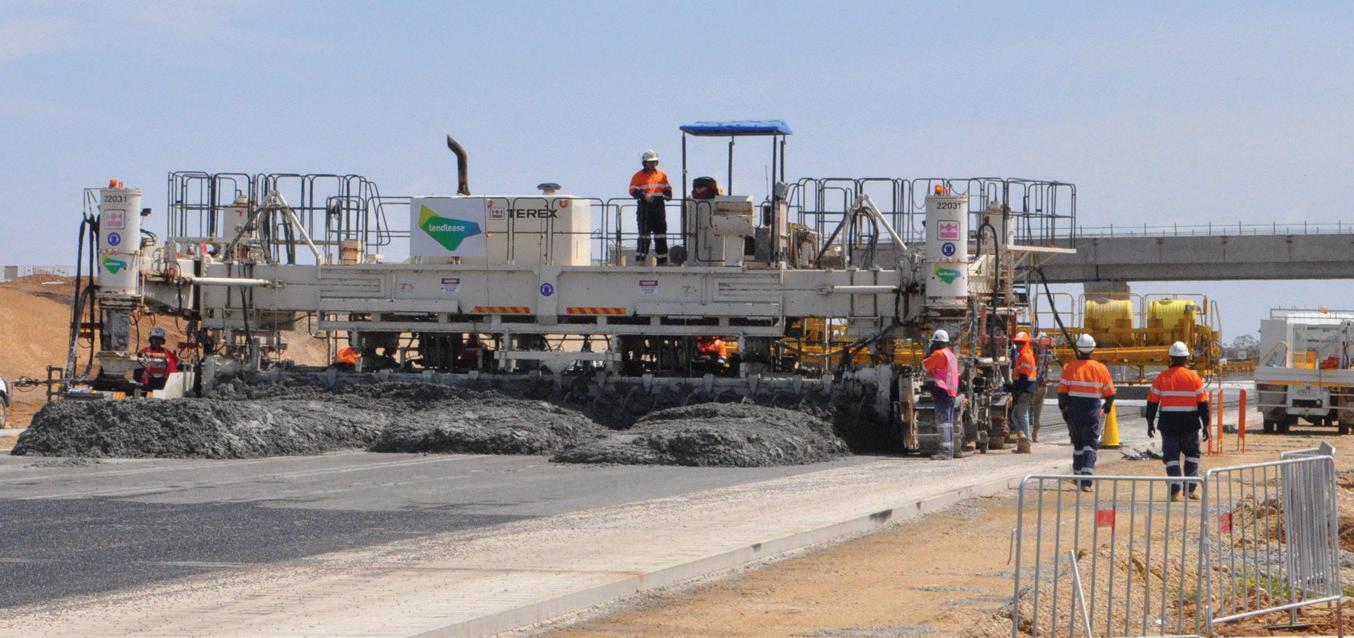
CONCRETE PAVEMENT THROUGH SALTPANS.
BRIDGE IN WETLANDS.
the Department of Defence. “We need more work though. After all, we are a construction business and we need clients with things they need built.” Summing up, Parkinson said: “I think SA has done a lot for Lendlease. South Australia is a great place to work, the clients are good, the stakeholders are good and the people in the industry are genuine and hardworking.”
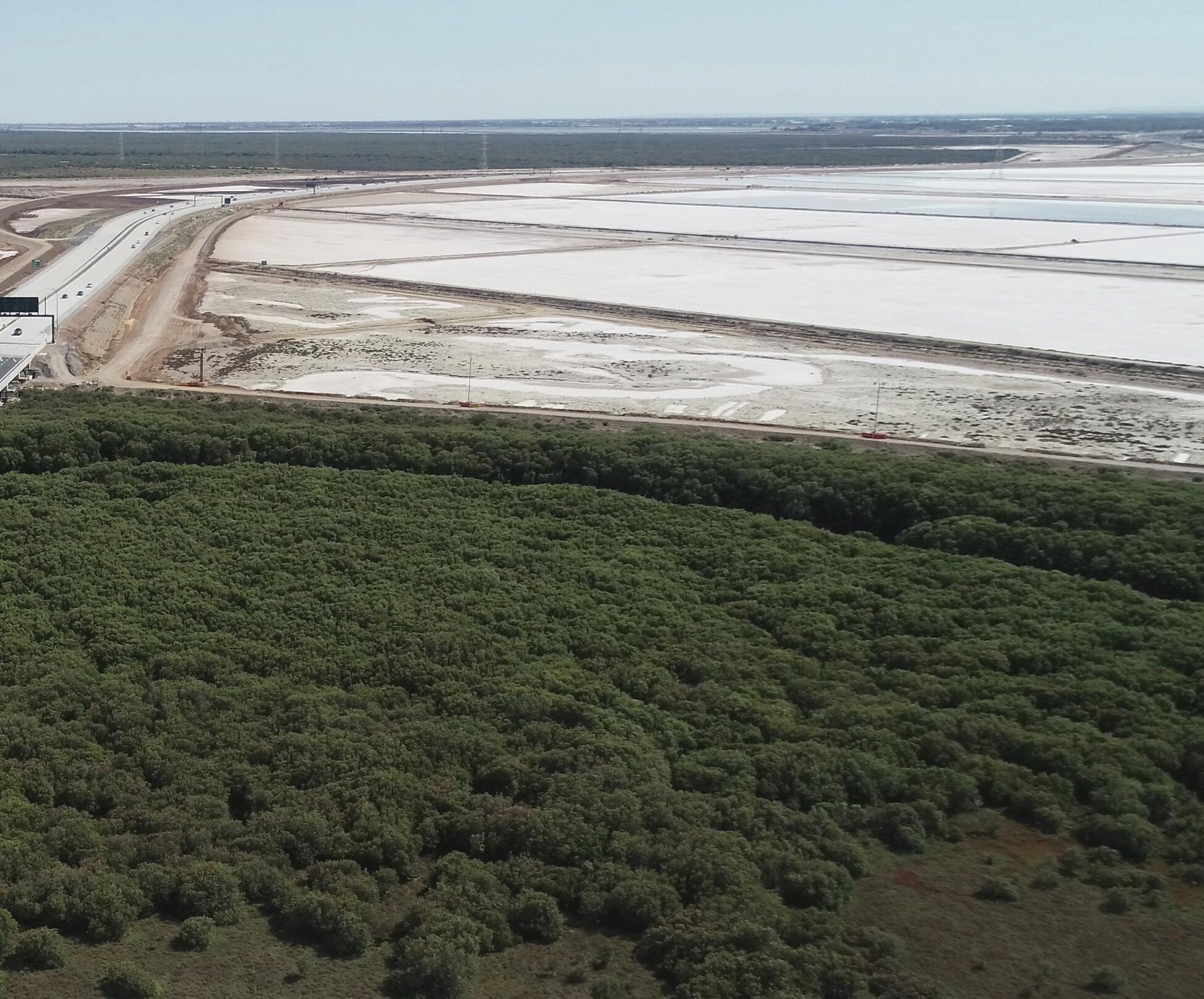
Written by John Satterley Images courtesy Lendlease.
BRIDGE CONSTRUCTION (BEAM LIFT) OVER PORT RIVER EXPRESSWAY WITH 400-TONNE CRANE.
